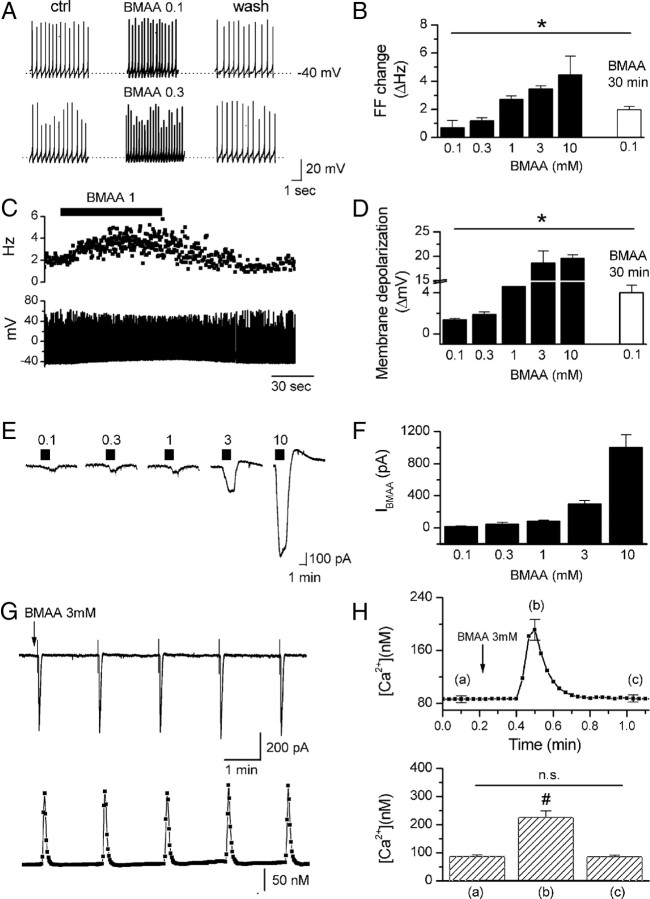Figure 1.
BMAA-induced firing frequency increase, membrane depolarization, inward current, and [Ca2+]i modification in DAergic neurons. A, C, Example traces showing transient firing rate increase in response to 0.1, 0.3, and 1 mm BMAA bath applications (1.5–2 min). B, D, Plots showing mean changes of firing frequency (FF) and membrane potential, respectively, in response to short (1.5–2 min, 0.1–10 mm, black bars) and long (30 min, 0.1 mm, white bars) BMAA bath applications. These effects were due to activation of an inward current (IBMAA) as revealed by voltage-clamp recordings (Vhold = −60 mV) (E, F). Means ± SEM of the plots B, D, and F are shown in supplemental Table 1 (available at www.jneurosci.org as supplemental material). G, Fast BMAA application(1–1.5 s, arrow) induced an inward current (top) that was associated with calcium transients (bottom). H, Top, Averaged calcium trace (n = 13) and mean calcium values (bottom) measured at the times indicated by the corresponding letters in the trace. #p < 0.0001.

